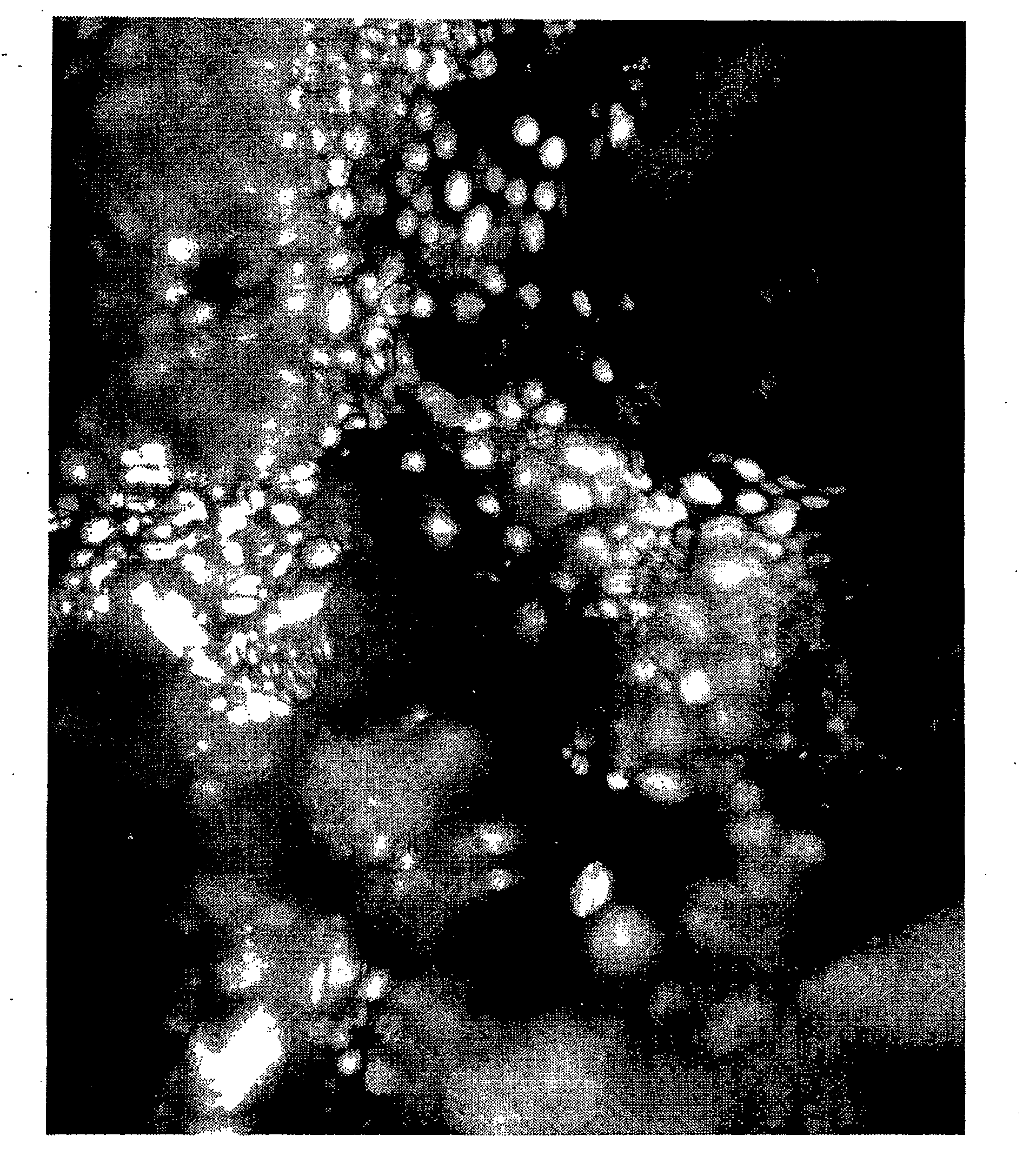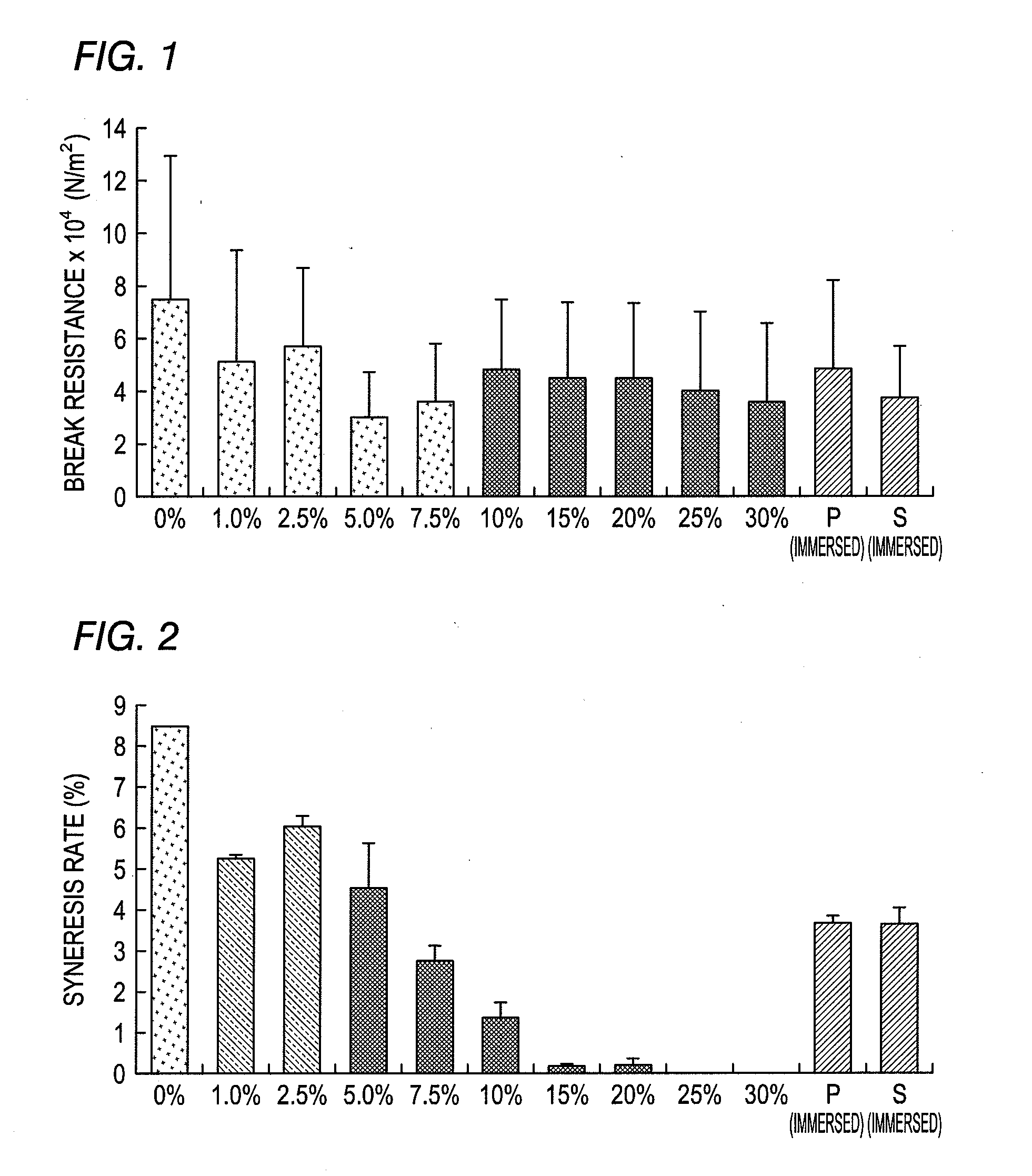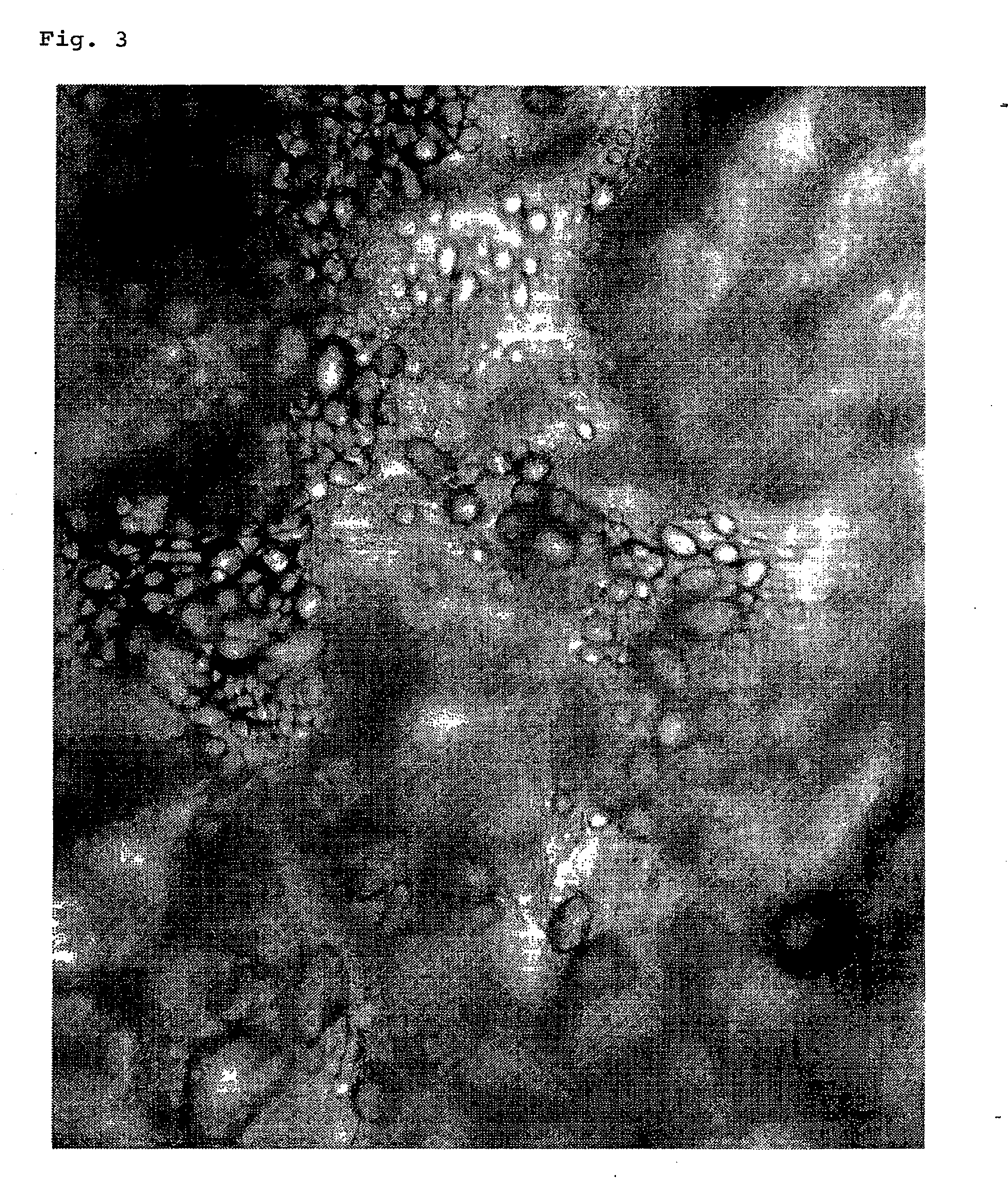Process for producing food
a technology for producing food and processing equipment, applied in the field of food, can solve problems such as difficulty in obtaining food, and achieve the effects of suppressing aspiration, promoting appetite, and suppressing the deformation of soft food materials
- Summary
- Abstract
- Description
- Claims
- Application Information
AI Technical Summary
Benefits of technology
Problems solved by technology
Method used
Image
Examples
example 1
[0113]Fifty g of bamboo shoot boiled in water was used. The bamboo shoot was frozen at −30° C. The bamboo shoot was then immersed to an aqueous dispersion water, wherein a 0.3 wt % enzyme (hemicellulase “Amano” 90: made by Amano Enzyme Inc.) heated to 50° C. and a non-hydrated thickener at the range of 0 wt % to 30 wt % (raw potato starch) were dispersed, for 15 minutes. After thawing, in a state of being immersed, the pressure was reduced for 5 minutes (40 mmHg) by a vacuum pump, and an enzyme reaction was performed for 60 minutes. Subsequently, enzyme deactivation and hydration (gelatinization) of the thickener were performed by heating for 5 minutes at 100° C.
[0114]The hardness (the break resistance) and syneresis rate were measured for the obtained food.
[0115]The break resistance was measured by Tensipresser (MODEL TTP-50 BXII: made by Taketomo Electric Inc.). The results are shown in FIG. 1.
[0116]The syneresis rate was measured by measuring 20 g of the obtained bamboo shoot, ho...
example 2
[0121]A burdock was peeled, cut into 10 mm-thick rings, boiled in boiling water for 2 minutes, cooled in water and frozen at −15° C. Subsequently, it was immersed to a solution including 30 wt % raw wheat starch and a 0.5 wt % degradative enzyme (Cellulosin ME: made by HBI Enzymes Inc.) for 10 minutes at 40° C. to thaw. While stirring (120 rpm), it was left to stand under a reduced pressure state (the initial pressure 40 mmHg) for 10 minutes at room temperature and returned to atmospheric pressure. After adding a seasoning solution (a commercially available broth consisting of soy sauce, extract of dried bonito shavings, table sugar, kelp extract and monosodium glutaminate) including a 1.5 wt % thickener (Sunuswell α: made by Nihon Starch Co., Ltd), it was packaged with deairation and sterilized with heat and pressure for 30 minutes at 95° C. to manufacture a burdock for those having difficulty in swallowing.
[0122]The syneresis rate was measured for the obtained burdock by the proce...
example 3
[0125]A commercially available bamboo shoot boiled in water was cut into quasi-triangle poles in 20 mm×30 mm×10 mm and frozen at −15° C. Subsequently, it was immersed to a solution including 20 wt % raw rice starch, a 0.3 wt % degradative enzyme (Pectinase G “Amano”: made by Amano Enzyme Inc.) and a 4 wt % powder seasoning (a commercially available broth consisting of soy sauce, extract of dried bonito shavings, table sugar, kelp extract and monosodium glutaminate) for 15 minutes at 50° C. to thaw. While agitating (120 rpm), it was left to stand under an applied pressure state (700 atmospheric pressure) for 10 minutes at room temperature and returned to atmospheric pressure. It was packaged with deairation without further processing and sterilized with heat and pressure for 30 minutes at 95° C. to manufacture a bamboo shoot for those having difficulty in swallowing.
[0126]The syneresis rate was measured for the obtained bamboo shoot by the procedure similar to Example 1. The syneresi...
PUM
| Property | Measurement | Unit |
|---|---|---|
| temperature | aaaaa | aaaaa |
| temperature | aaaaa | aaaaa |
| temperature | aaaaa | aaaaa |
Abstract
Description
Claims
Application Information
 Login to View More
Login to View More - R&D
- Intellectual Property
- Life Sciences
- Materials
- Tech Scout
- Unparalleled Data Quality
- Higher Quality Content
- 60% Fewer Hallucinations
Browse by: Latest US Patents, China's latest patents, Technical Efficacy Thesaurus, Application Domain, Technology Topic, Popular Technical Reports.
© 2025 PatSnap. All rights reserved.Legal|Privacy policy|Modern Slavery Act Transparency Statement|Sitemap|About US| Contact US: help@patsnap.com



